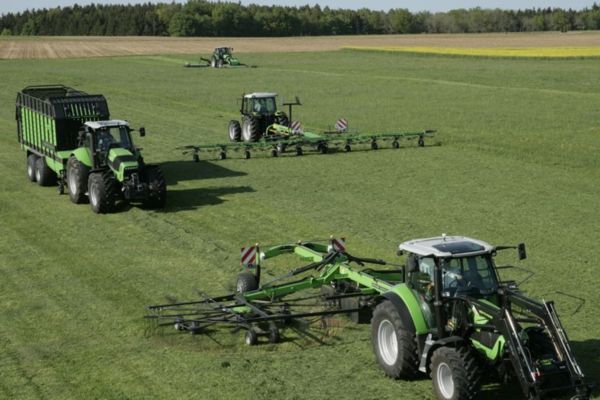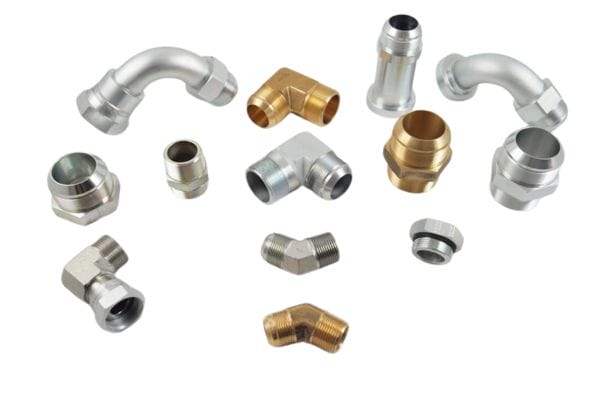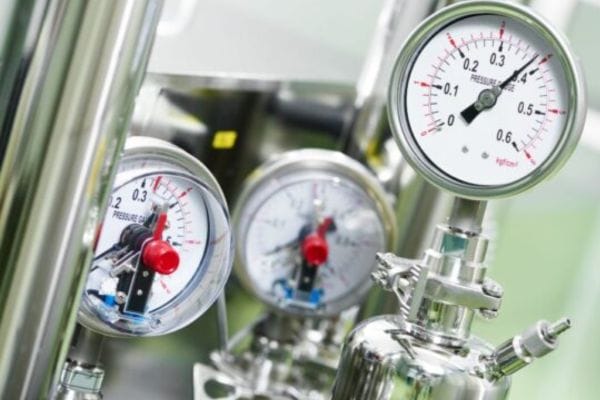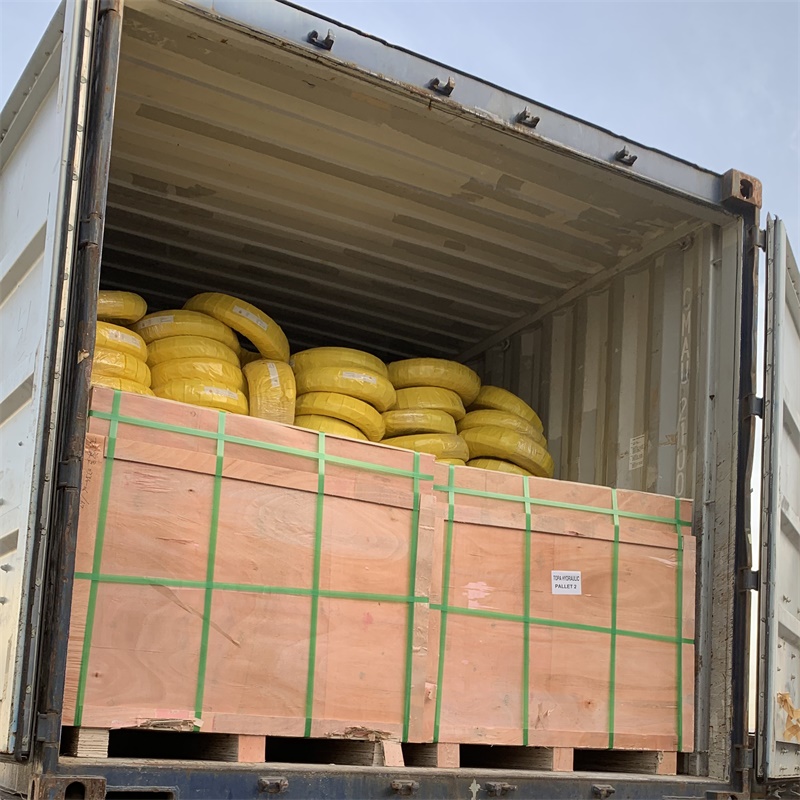Sourcing hydraulic fittings from an international supplier may sound simple, but it’s not. A wrong thread, mismatched standards, or unclear quote can quickly turn a cheap deal into an expensive nightmare. These aren’t just technical issues, but production delays, lost revenue and security risks waiting to happen. And if you’re also dealing with jet lag, language barriers and unclear specifications, the frustration only grows. Through real-life examples, proven solutions and experience, Topa will show you how to source smarter and safer – no matter where your suppliers are located.
Choosing the Wrong Thread or Fitting Type
Let’s be honest—thread confusion is one of the top reasons hydraulic fittings get returned, or worse, installed incorrectly. We’ve seen customers lose money on unusable stock, waste time chasing adapters, or damage their machinery all because one small detail—thread type—was overlooked.
And it’s not their fault. With so many thread standards—BSP, NPT, JIC, ORFS, DIN, METRIC, UNF—it’s easy to assume they’re interchangeable. Spoiler: they’re not.
So how do these threads actually differ?
| Thread Type | Region / Common Use | Sealing Type | Comment |
| BSP (British Standard Pipe) | Europe, Asia | 60° cone or bonded seal | Common in European equipment |
| NPT (National Pipe Tapered) | USA, Canada | Tapered thread seal | Needs PTFE or sealant |
| JIC (Joint Industry Council) | USA, Global | 37° flare | Strong under vibration |
| ORFS (O-Ring Face Seal) | Global | Flat face with O-ring | Excellent in high-pressure |
| DIN / Metric | Europe | 24° cone or O-ring | Used in many European machines |
| UNF (Unified Fine Thread) | USA | Flare / O-ring | Common in aerospace or precision systems |
If you don’t know what’s installed in your system, guessing isn’t worth the risk. Threads that look identical at a glance often have different angles, pitches, and sealing methods. Even a 1mm difference in pitch or thread diameter can cause leaks—or worse, cross-threading that ruins your ports.
Here’s how to avoid this trap
- Check your equipment manual – It usually lists thread types.
- Use a thread gauge – Or ask your maintenance team to measure.
- Take photos and send them to your supplier – At Topa, we offer free thread identification help.
- Order samples for testing – Especially for the first purchase.
Pro tip: If you’re unsure, don’t wait until after production to figure it out. Talk to your supplier before ordering. A good supplier will be able to confirm the thread based on machine brand, country of origin, or even just a photo with measurements.
At Topa, we’ve helped hundreds of clients avoid compatibility issues by confirming thread types upfront. And when needed, we even suggest adapter solutions to make non-standard systems work without a full redesign.
Overlooking Local Standards or System Requirements
It’s easy to assume that hydraulic fittings are universal—but they’re not. And overlooking local system standards is one of the fastest ways to end up with leaky connections, damaged ports, or entire shipments that just don’t fit. We’ve seen it too often: a buyer places a bulk order based on appearance alone, only to realize once the fittings arrive that the sealing method or tolerance doesn’t match their local system.
Let’s break it down.
Different regions follow different hydraulic engineering standards. A 24° cone DIN fitting from Germany won’t mate correctly with an American ORFS or NPT port. A BSPP fitting used across the UK, India, and Australia has a parallel thread, while NPT fittings used in North and South America have a tapered thread. Even if the thread sizes appear similar, the sealing mechanism is completely different.
And it’s not just about threads.
- Tolerances vary: Some countries allow looser tolerances; others require ultra-precise sizing to prevent leaks under high pressure.
- Surface finishes matter: In tropical climates (like Southeast Asia or parts of South America), poor plating can result in early rust or fitting failure.
- Sealing methods vary: Some systems rely on metal-to-metal contact (cone or flare), others on elastomer O-rings. Mixing the two often leads to leaks or inconsistent performance.
This gets even more complicated in regions where equipment is imported from multiple countries. One machine might use BSP fittings, another DIN Metric, and another NPT. That’s why blindly applying a “standard” solution across all equipment doesn’t work.
Here’s how to stay ahead of the problem
- Send us your target market – We’ve supplied fittings to over 30 countries and understand which standards work best in each region.
- Use pre-order design reviews – At Topa, we offer free design checks. Send us your drawing or application info, and we’ll verify system compatibility.
- Request samples for validation – Especially if you’re planning to test a new fitting series or modify an existing setup.
- Standardize where possible – Many buyers reduce inventory headaches by aligning their entire system to one thread standard.
Localization isn’t just a technical detail—it’s a strategy. When you choose fittings that match your region’s expectations, you reduce installation errors, minimize system downtime, and keep your customers happy.
Need help figuring out if your current system can be localized for easier sourcing? We’ve got engineers who can assist—just send a quick message with the equipment brand or country of use.
Ignoring Total Cost: Mold Fees, Shipping, Duties, and More
Many buyers focus solely on unit price when evaluating overseas suppliers—but that’s just the tip of the iceberg. The real cost of your hydraulic fittings often includes tooling, logistics, and paperwork, and if those costs catch you off guard, your profit margins vanish fast.
Let’s say you’re sourcing a custom hydraulic adapter. You receive a quote for $0.80 per piece—great, right? But what wasn’t included?
- $300 mold fee for custom production
- $200 express shipping to meet a tight deadline
- Customs brokerage fees and import duties
- Packaging charges or non-standard labeling
- Bank transfer fees or charges for currency exchange
- Additional tax documents or certificates if required for customs clearance
Suddenly, that $0.80 fitting becomes $1.50 or more—and if you didn’t factor that in, you’re stuck explaining to your manager or end client why the cost doubled.
We’ve seen cases where buyers were surprised by:
- A $200 mold fee that wasn’t mentioned until after confirming the order.
- Inco terms confusion (like FOB vs. CIF) that left them responsible for unexpected port fees.
- Missing COC/MSDS/ISO docs, causing delays in customs clearance or even shipment rejection.
At Topa, we believe cost transparency is not optional—it’s mandatory. That’s why we always provide:
- All-in-one quotations: mold fee, packaging, shipping, optional docs—clearly listed.
- Customs support: we can prepare commercial invoices, HS codes, and shipping labels based on your country’s import policies.
What you can do
- Always ask for full landed cost, not just unit price.
- Clarify shipping terms (FOB, CIF, DDP) before confirming.
- Request document samples if you need ISO, REACH, or custom packaging.
- Check with your customs broker if you’re importing for the first time.
The cheapest product is often not the cheapest overall. Smart buyers look beyond the surface price and partner with suppliers who lay everything out clearly, from quote to shipment.
Underestimating the Risk of Dimensional Errors or Surface Defects
When you’re sourcing hydraulic fittings, especially from overseas, it’s tempting to focus on price and lead time. But here’s the harsh truth: a fitting that doesn’t fit, leaks, or corrodes early is worthless—no matter how cheap it was. And unfortunately, issues like dimensional mismatch, poor surface finish, or inconsistent quality are more common than many buyers realize.

Let’s talk real-world problems:
- Oversized threads that don’t seat properly or crack mating ports during installation
- Undersized fittings that feel “loose” or leak even when tightened to spec
- Burrs and sharp edges that damage O-rings or cut into hoses during assembly
- Plating that flakes off or starts rusting within weeks—especially in humid or coastal environments
- Inconsistent dimensions across batches, making it impossible to standardize or mix inventory
- Surface scratches or tool marks that cause customers to question quality, even if functionality is unaffected
One of our clients in Europe received a bulk shipment from a different supplier before switching to us. More than 30% of the fittings had burrs or threading issues. The backlash? Lost time, urgent replacements, and customer complaints. They came to Topa and immediately requested tighter quality control—and we delivered.
Here’s how we eliminate these risks at Topa
- 100% Quality Inspection Before Shipment: Every piece is checked—not just spot-checked—including thread tolerances, sealing surfaces, plating, and critical dimensions.
- In-House Thread Gauges and GO/NO-GO Tools: Used on all production batches to ensure thread compatibility.
- Full Surface Treatment Control: We use high-grade zinc-nickel or trivalent chromium plating options that pass salt spray testing. No weak plating, no quick rust.
- Polishing and Deburring Procedures: Each fitting is deburred, cleaned, and visually inspected—especially around threads and sealing areas.
For custom fittings, we go a step further:
- Drawings for First Orders: You receive a full technical drawing (with dimensions and thread specs) before production. You can review or request modifications.
- Prototype Samples or Photos Before Mass Production: Want to see what your fitting will look like before we make 2,000 pieces? No problem—we’ll send videos or high-res photos.
- Dimensional Reports Available Upon Request: For critical orders, we can share detailed measurement sheets to confirm everything meets your spec.
What can buyers do to reduce risk?
- Always request a technical drawing for new or modified items
- Ask if fittings are checked with GO/NO-GO thread gauges
- Don’t skip the surface finish check—even for low-cost parts
- Start with a small batch or sample before scaling up
Whether you’re dealing with OEM systems, aftermarket repairs, or distribution sales, your reputation is tied to the quality of the fittings you provide. Don’t let hidden flaws turn into visible failures. When you work with Topa, you’re not just buying fittings—you’re buying a process that’s built around consistency, traceability, and zero-defect mindset.
Poor Communication Slows Everything Down
In international sourcing, poor communication isn’t just annoying—it’s expensive. Delayed quotes, unanswered emails, and mixed messages between teams can cost you days, even weeks. And if your project is time-sensitive (which most are), that lag could mean missed deadlines, delayed shipments, or lost contracts.
Let’s face it—buyers hate:
- Waiting three days for a simple quote
- Getting multiple email replies from different people, none of whom understand the full project
- Having to follow up over and over just to get drawings or a production update
- Re-explaining the same specs to different team members because no one is tracking the order
- Being left in the dark once the payment is made, with no updates until goods arrive (or don’t)
These aren’t just minor frustrations—they destroy trust.
We get it. You need a supplier who treats your time like it matters. That’s why at Topa, we built our communication process around speed, clarity, and accountability.
Here’s what we do differently
- 24-Hour Quotation Promise Send us your fitting request—drawings, photos, or even just a rough description—and we’ll reply within one business day. No exceptions.
- One Project = One Contact No more bouncing between sales, engineering, and logistics. You’ll have a dedicated account manager who handles your project from start to finish. They know your specs, your delivery timeline, and your pricing terms.
- Real-Time Order Updates Once your order is in production, we track every step. If you need a status update, photos, or logistics details—we already have it on file and ready to send.
- Multi-Channel Support WhatsApp, WeChat, Email, Phone—we reply on the platform that works best for you. And we don’t ghost. If your message is received during working hours, you’ll hear back the same day.
- Internal CRM System Every order, message, and drawing is stored in our system. So even if your account manager is away, anyone on our team can pick up the thread—without asking you to “resend everything.”
What you can expect as a Topa customer
- Fast, professional replies
- Consistent communication—no handoffs or repeated explanations
- Proactive updates instead of reactive responses
- A real person who knows your project and follows through
Buyers choose Topa not just for pricing or product range—but because we make their job easier. That starts with crystal-clear, fast communication from day one.
No Visibility into Production or Shipping Status
For buyers managing multiple projects across time zones and tight deadlines, one thing is non-negotiable: transparency. If you don’t know where your order stands, you can’t plan production, make delivery commitments to your customer, or keep your boss off your back. And unfortunately, too many suppliers go silent once the payment clears.
You know the story:
- You place the order.
- You wait.
- You follow up.
- You wait some more.
- Then suddenly—tracking number… or worse, delay notice.
That kind of black box supply chain creates anxiety, damages trust, and puts your business at risk. Whether you’re a distributor preparing for a product launch or a maintenance team with a machine down, delays with no updates can ripple into lost revenue, idle equipment, or missed client deadlines.
At Topa, we do things differently.

Here’s how we keep you in the loop—every step of the way:
Live Order Tracking
Once your order is placed, we generate a custom production schedule with key milestones—drawing confirmation, machining, plating, inspection, and packing. You’ll get updates at each step, either by email or your preferred messaging platform.
Pre-Dispatch Packaging Photos
Before shipment, we send high-res photos of:
- Final product (random samples from your batch)
- Packaging (labels, cartons, pallets, etc.)
- Container or box sealing (so you know exactly what’s leaving our warehouse)
Shipping Timeline + Tracking Number
We provide the exact shipping date in advance, and once your order ships, we send the real-time tracking link (DHL, FedEx, sea freight, etc.)—plus PDFs of the commercial invoice, packing list, and any required compliance documents.
Early Warning System
If something unexpected happens—raw material delays, plating queue backup, port congestion—we’ll tell you immediately. No sugar-coating, no last-minute surprises.
Why this matters
- You can plan downstream processes—packaging, local delivery, inventory stocking—without guessing.
- You can update your customer confidently, knowing you have proof and visibility.
- You avoid unnecessary stress or delays caused by last-minute scrambling.
Topa isn’t just a supplier—we’re your behind-the-scenes partner. We know that visibility builds trust, and that trust builds long-term business.
Lack of Technical Support Before and After Sales
Hydraulic fittings may look simple—but when you’re dealing with different thread types, sealing standards, and pressure ratings, a tiny mistake can cause major headaches. One mismatched fitting, and you’re facing leaks, rework, or angry end users. Unfortunately, many suppliers treat fittings like “commodity parts” and skip the most critical step: technical support.
We’ve heard the frustration before:
- “The supplier sent me a drawing, but I didn’t understand half of it.”
- “No one could explain whether BSPP would seal with my JIC port.”
- “We had a leakage issue after installation—and the supplier disappeared.”
- “They couldn’t provide the ISO or SAE standard they claimed to meet.”
That’s a real problem. Because when you’re spending money—especially on custom parts or large orders—you need answers, not silence.
At Topa, we take technical support seriously—before and after the sale.
Here’s what we provide to support your engineering and purchasing team:
Pre-Sales Engineering Support
- Fitting Identification Help Not sure if you need BSPT or NPT? Metric or UNF? Send us photos, measurements, or drawings—we’ll identify it for you.
- ISO, SAE, or DIN Clarification Our engineers can explain what each standard means for your specific system—no jargon, just clear answers.
Technical Resources
- Thread Guide PDFs (with images and measurement instructions)
- O-ring Selection Chart (compatible materials and sizes)
- Video Tutorials (e.g. how to measure threads, how to install ORFS vs. cone seats)
- Material Test Certificates, Plating Reports, Salt Spray Test Results, etc.
After-Sales Support
- Leakage troubleshooting: Send us a photo or video—we’ll diagnose it with you.
- Fitment issues? We help assess whether it’s a thread mismatch, under-torque, or surface damage.
- Immediate response to quality claims: We don’t wait days to reply. If there’s an issue, we react fast and offer solutions—whether that’s a free replacement, tech video, or on-call engineer.
Hydraulic buyers aren’t just purchasing metal—they’re investing in reliability, safety, and ease of mind. If a supplier can’t help you before production or after delivery, you’re left carrying all the risk.
At Topa, we stand beside you from drawing to delivery—and even after installation.
Conclusion
Need help to identify a thread? Want samples to test quality before bulk buying? Have a custom fitting design that needs quoting? Send us a photo, drawing, or even just a part number. We’ll take it from there. Contact Topa today — and get hydraulic fittings that fit your system, your timeline, and your standards.
FAQ
Is the quality of Topa fittings compatible with Parker or Eaton?
Yes. We meet ISO/SAE standards and use high-grade materials at a more affordable price.
What if I pick the wrong threads?
We offer a thread matching service. Please send us your samples or photos and we will confirm before production.
Do you charge mold fee for customized parts?
Only for the first time mold charge. If the quantity meets MOQ, we will refund the mold charge. All charges are quoted in advance.
How do I know which thread type I need – BSP, NPT or Metric?
Send us a photo, part number or basic measurements and we will help you determine the correct thread type before you place your order.
Can I get drawings or samples before mass production?
Yes. For customized parts, we can provide drawings and send samples for testing before official production.
Are there any hidden costs such as tooling fees or shipping costs?
No, there are not. We provide comprehensive, transparent quotes with all costs – tooling, packaging, shipping and documentation – clearly outlined up front.






